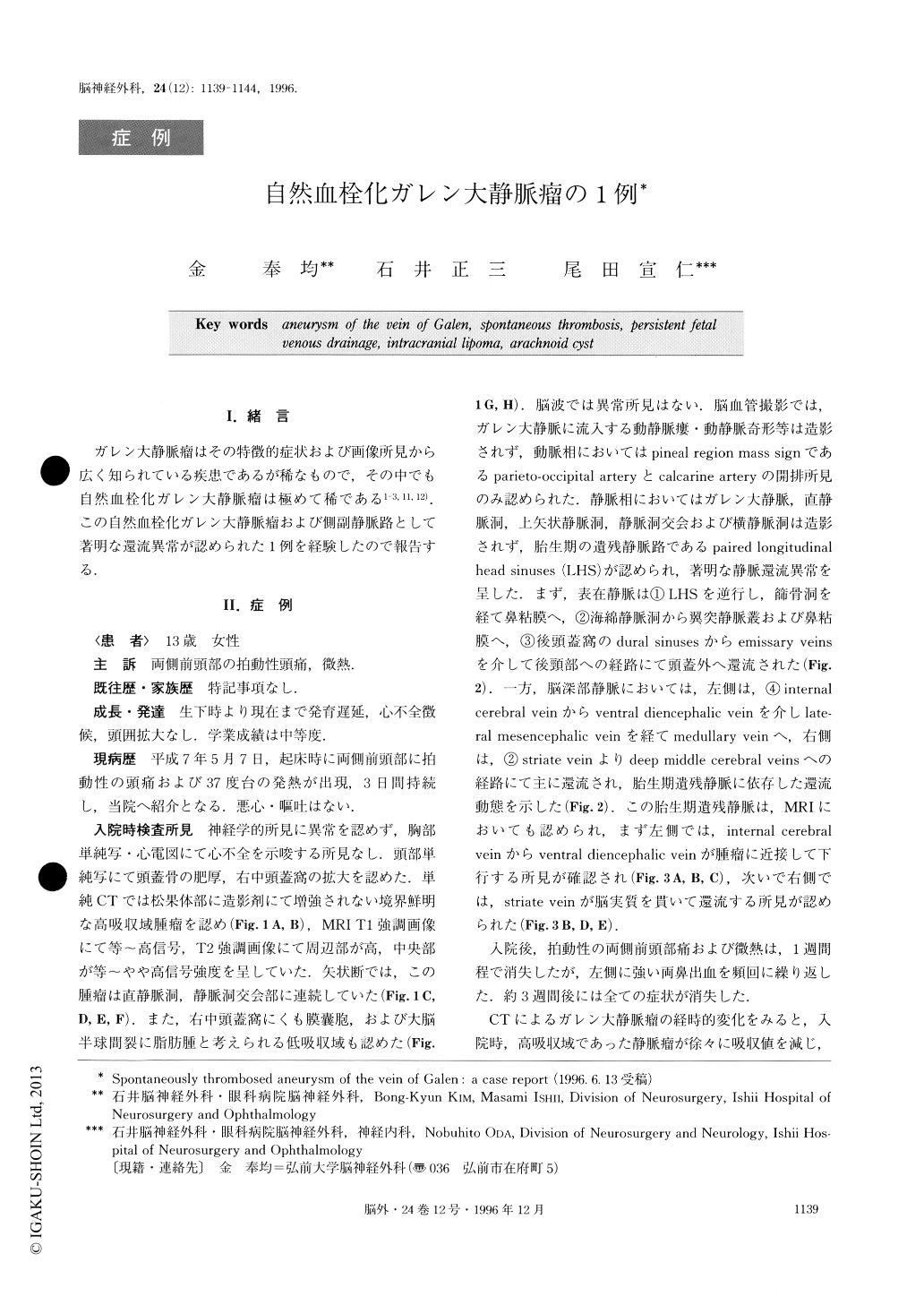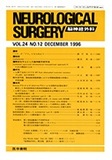Japanese
English
- 有料閲覧
- Abstract 文献概要
- 1ページ目 Look Inside
I.緒言
ガレン大静脈瘤はその特徴的症状および画像所見から広く知られている疾患であるが稀なもので,その中でも自然血栓化ガレン大静脈瘤は極めて稀である1-3,11,12).この自然血栓化ガレン大静脈瘤および側副静脈路として著明な還流異常が認められた1例を経験したので報告する.
A 13-year-old girl was admitted with headache of sudden onset. Neurological examination did not reveal any abnormalities on admission. Her growth and development were normal.
CT scan showed a high density mass in the pineal re-gion without contrast enhancement. It was a spon-taneously thrombosed aneurysm of the vein of Galen associated with thrombosis of the straight and the transverse sinuses on MRI. Moreover, there were an interhemispheric lipoma and a right temporal arachnoid cyst. The superior sagittal, bilateral transverse, sigmoid and straight sinuses were not opacified but unusual pathways of various venous channels were demonstrat-ed on angiograms. Persistent fetal drainage remained as the collateral venous pathways such as the ventral diencephalic and striate veins and the paired longitu-dinal head sinuses.
There were two types of unusual deep venous path-ways. The left internal cerebral vein drained into the left ventral diencephalic vein. The left ventral dience-phalic vein drained through the left lateral mesencepha-lic and ponto-medullary veins into the spinal venous plexi. The dilated striate veins drained into the deep middle cerebral veins through the cerebral parenchyma. Mainly, there were three types of superficial venous pathways. The paired longitudinal head sinuses drained into the emissary veins at the ethmoid sinus in retro-grade fashion, and finally into the nasal mucosa. The su-perficial cerebral veins drained into the cavernous sinus which communicated with the nasal mucosa and the pterygoid plexi. The veins of the posterior fossa drained into the occipital emissary veins.
After being admitted, the patient had remarkable nasal bleeding which was difficult to stop. This symp-tom seemed to be related to the collateral venous drain-age to the nasal mucosa shown on angiograms. Finally, she became completely asymptomatic three weeks after admission.

Copyright © 1996, Igaku-Shoin Ltd. All rights reserved.


